How To Find Out File Types in Linux?
Overview
In Linux, files are an essential component of the operating system. Understanding the different types of files in Linux and how to work with them is crucial for efficient system administration. This overview will provide a brief explanation of the various Linux file types and some commonly used file commands.
Introduction
Linux treats everything as a file, including regular files, directories, and special files. Each file type in Linux serves a specific purpose and has its own characteristics and attributes.
Types of Files
Here are the main types of files in Linux:
Regular Files
Regular files are the most common and basic file type in Linux. They contain data in a human-readable or binary format and are used to store various types of information. Regular files can be further classified into text files and binary files.
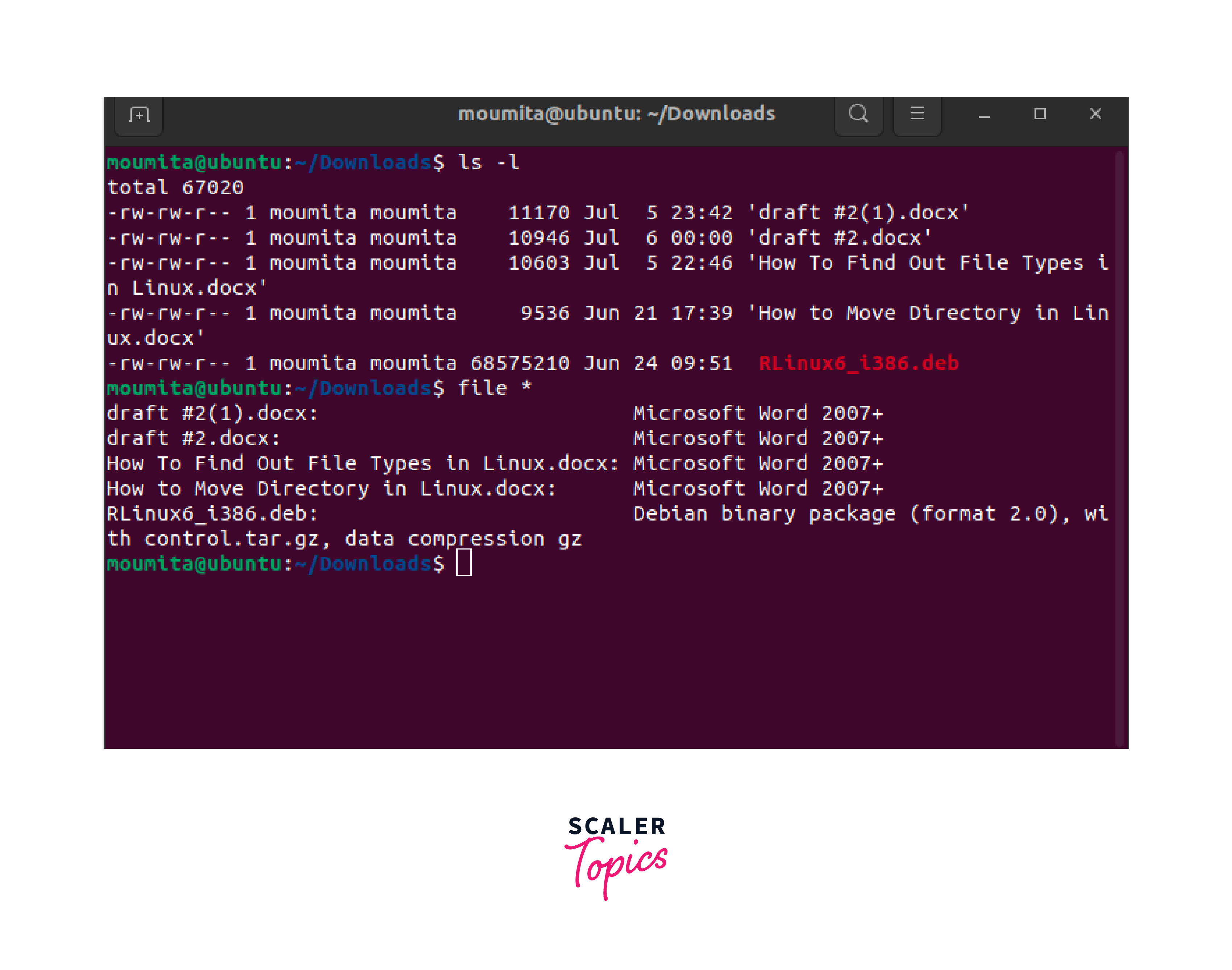
Directory Files
Directory a file type in Linux, also known as directories or folders, are a fundamental component of file systems in Linux. They serve as containers for organizing and structuring files and other directories. Directories provide a hierarchical structure that allows users to navigate and access files efficiently.
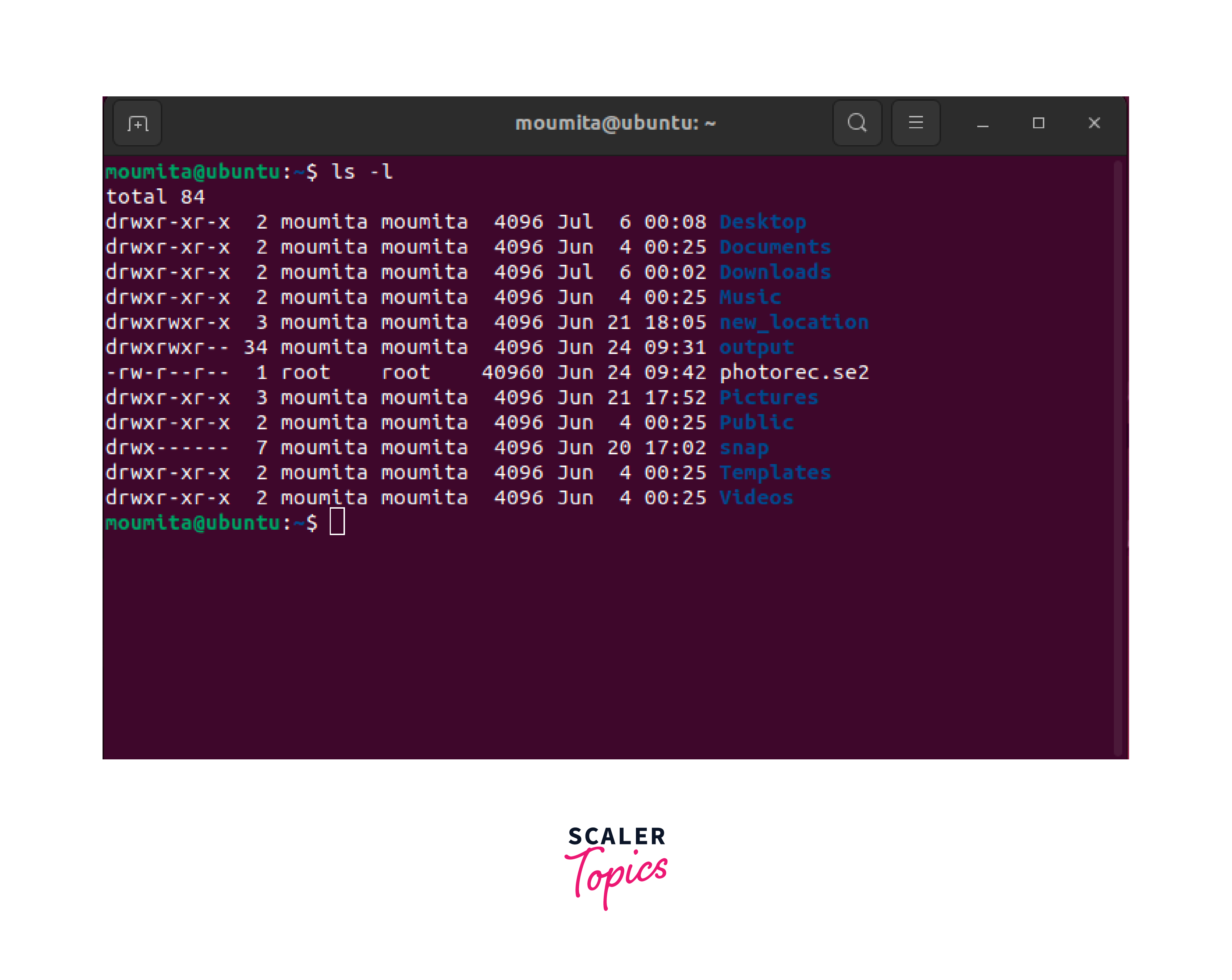
Special Files
Special types of files in Linux are used to interact with hardware devices and provide access to system resources. There are several types of special files in Linux:
Block File (b)
A block file type in Linux, often referred to as a block device, represents a physical or virtual device that allows data to be read from or written to in fixed-sized blocks. These Linux file types, typically correspond to storage devices such as hard drives, solid-state drives (SSDs), or USB drives.
Block files provide a means for the operating system and applications to interact with these storage devices. They abstract the low-level details of accessing the storage and provide a higher-level interface to work with.
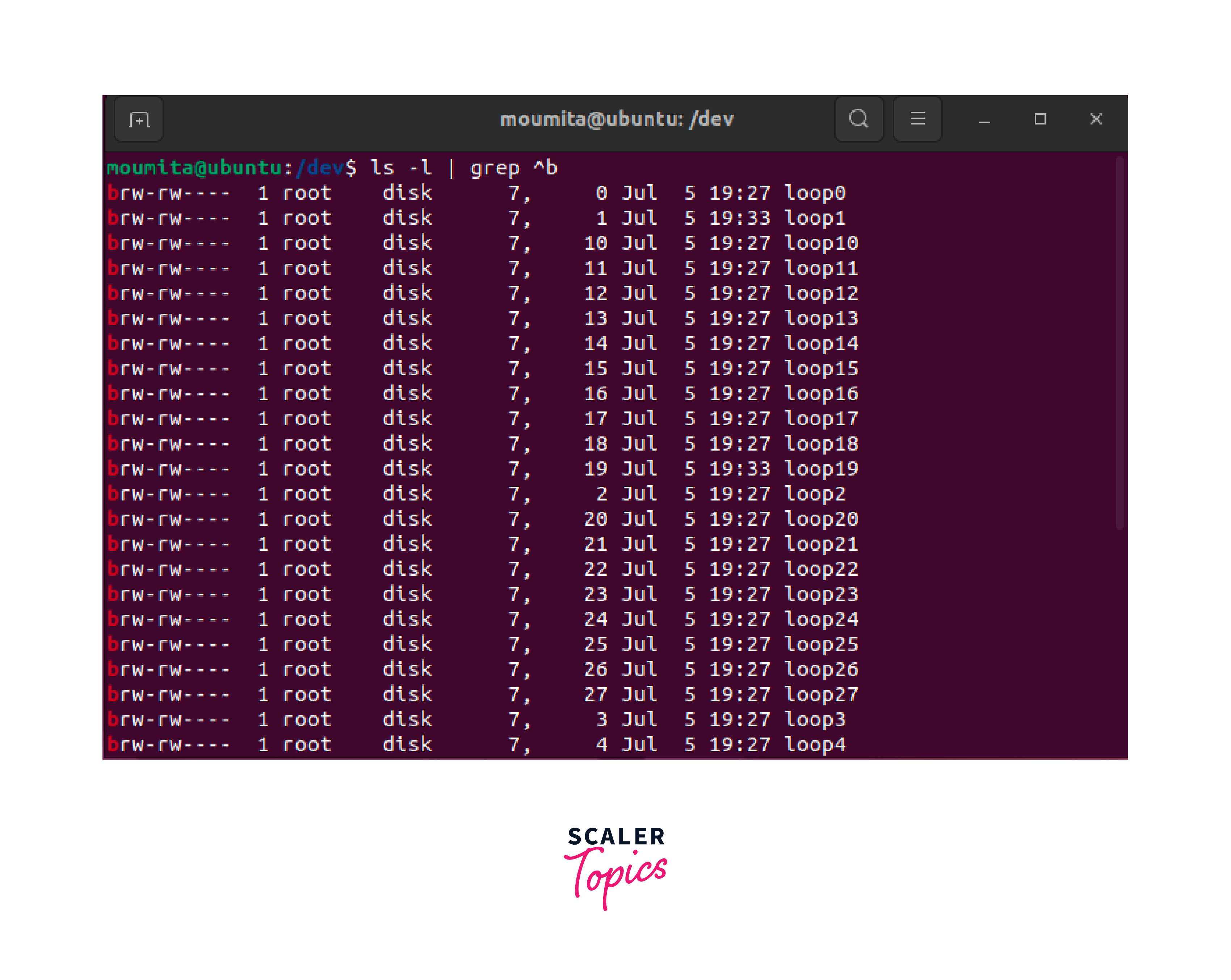
Character Device File (c)
In Linux, another type of file commonly encountered is the character device file, denoted by the letter 'c'. Character device files represent devices that transfer data in a character-by-character manner, without organizing it into fixed-sized blocks. These devices are typically used for input and output operations that involve streaming data, such as keyboards, mice, terminals, and serial ports.
Character device files provide a way for the operating system and applications to interact with these devices by reading or writing data on a character basis. They abstract the low-level details of device communication and provide a higher-level interface for software to access and control the devices.
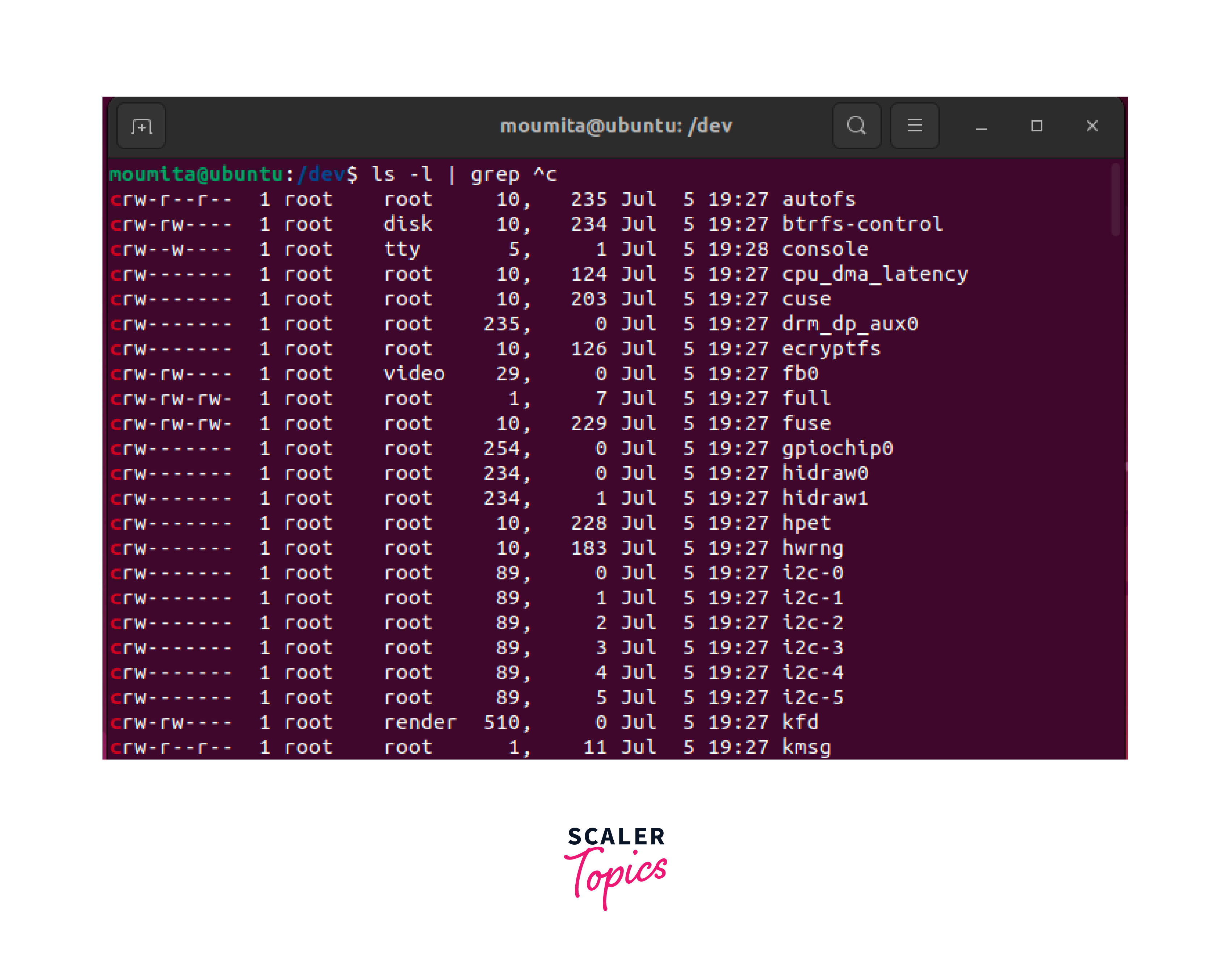
Named Pipe File
In Linux, a named pipe file, denoted by the letter 'p', is a special type of file that provides a mechanism for interprocess communication (IPC). Named pipes, also known as FIFOs (First-In, First-Out), allow data to be passed between processes, even if they are unrelated or running at different times.
A named pipe operates as a bidirectional communication channel, where one process writes data to the pipe, and another process reads it. It enables communication between processes without the need for shared memory or explicit socket connections.
Named pipes are created using the mkfifo command or programmatically through system calls. Once a named pipe is created, processes can open it for reading or writing, similar to how regular files are accessed.
Symbolic Link File (l)
In Linux, a symbolic link file, denoted by the letter 'l', is a special type of file that acts as a pointer or reference to another file or directory. Symbolic links, also known as symlinks or soft links, allow you to create shortcuts or aliases to files and directories, providing a convenient way to access them without having to navigate the entire file system hierarchy.
A symbolic link file contains the path or location of the target file or directory it points to. When you access a symbolic link, the operating system transparently redirects you to the actual file or directory that the link references.

Socket File (s)
In Linux, a socket file, denoted by the letter 's', is a special type of file that enables interprocess communication (IPC) between different processes on the same machine or even across a network. Sockets provide a mechanism for processes to exchange data, similar to named pipes or network sockets.
Socket files act as endpoints for communication channels and facilitate communication using various protocols, such as TCP (Transmission Control Protocol) or UDP (User Datagram Protocol). They allow processes to establish connections, send and receive data, and perform network-based operations.
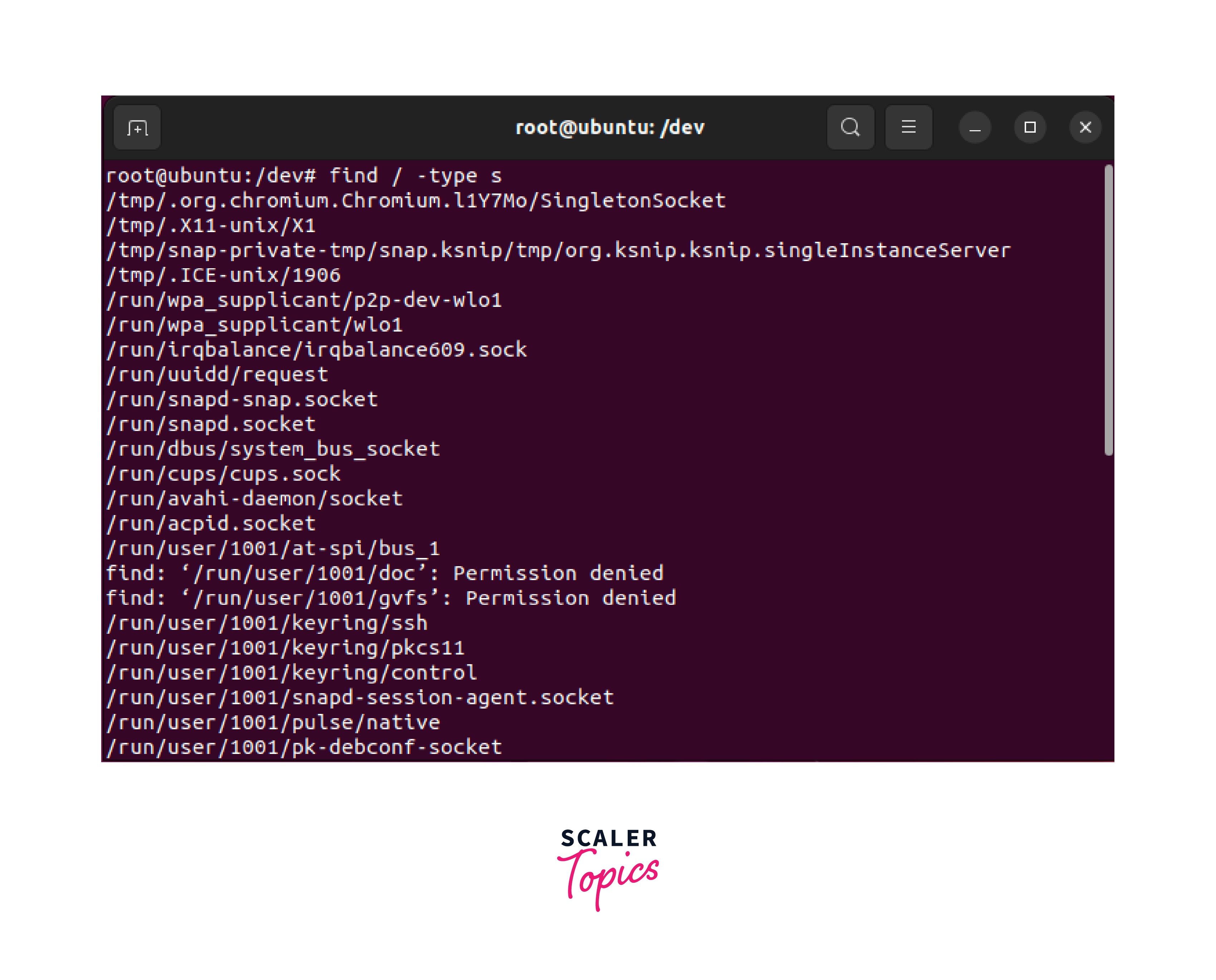
Syntax
When working with files in Linux, you can utilize various file commands in the terminal. Here is a table outlining some commonly used file commands:
| Command | Description |
|---|---|
| ls | Lists files and directories in the current directory |
| pwd | Prints the current working directory |
| cd | Changes the current directory |
| mkdir | Creates a new directory |
| rm | Removes files or directories |
| cp | Copies files and directories |
| mv | Moves or renames files and directories |
| cat | Concatenates and displays file contents |
| head | Displays the beginning of a file |
| tail | Displays the end of a file |
| chmod | Changes the permissions of a file or directory |
| chown | Changes the owner of a file or directory |
| chgrp | Changes the group ownership of a file or directory |
| touch | Creates an empty file or updates the timestamp of a file |
Conclusion
- Understanding the different types of files in Linux is crucial for effective file management and system administration.
- Regular files store data, directory files organize other files, and special files provide access to hardware devices and system resources.
- By utilizing the various file commands available in Linux, you can manipulate and interact with files efficiently.
